I look down into Iceland’s Silfra crevasse and I can feel the chill of the pristine glacial water drifting up toward my face. The water is crystal clear and I can see the jet black lava stone bottom 70 or 80 feet beneath the surface. A bucket list moment had finally arrived. I was diving in Iceland. It was time to plunge into some of the coldest and clearest water in the world.
Table of Contents
Diving into the Silfra Fissure Iceland
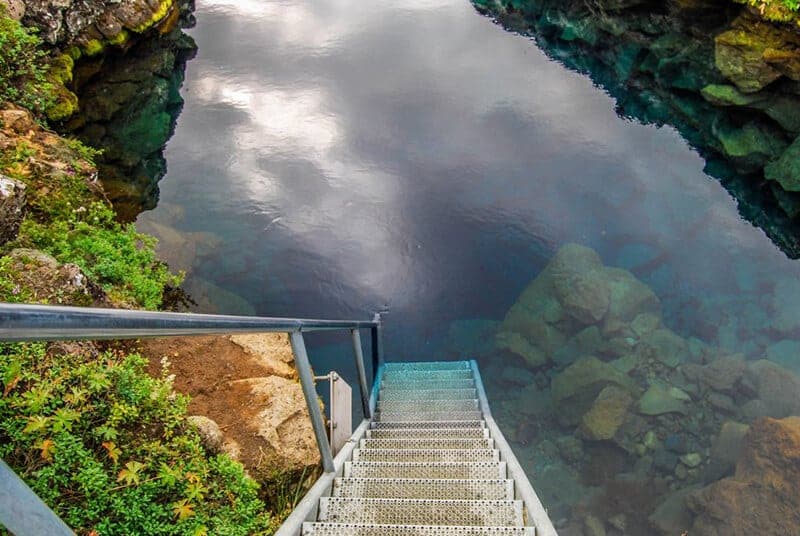
When regular people dream of vacations they think of sunny beaches, warm weather and relaxation. Then there are scuba divers. I have been a licensed scuba diver for the better part of my life. In this time, I have done my fair share of cold water diving, but nothing has come even remotely close to the frigid waters of the Silfra.
For as long as I can remember, traveling and scuba diving the Silfra has been an Iceland bucket list item for me. Located 40 kilometers from the Arctic circle, most people would call me crazy for even suggesting a dive there.
Well, I guess crazy is just my middle name because 48 hours after landing on the island of fire and ice, I suited up, about to find out what it was like to scuba dive into one of the coldest and clearest places on the planet.
The Silfra: A Place Unlike Any Other
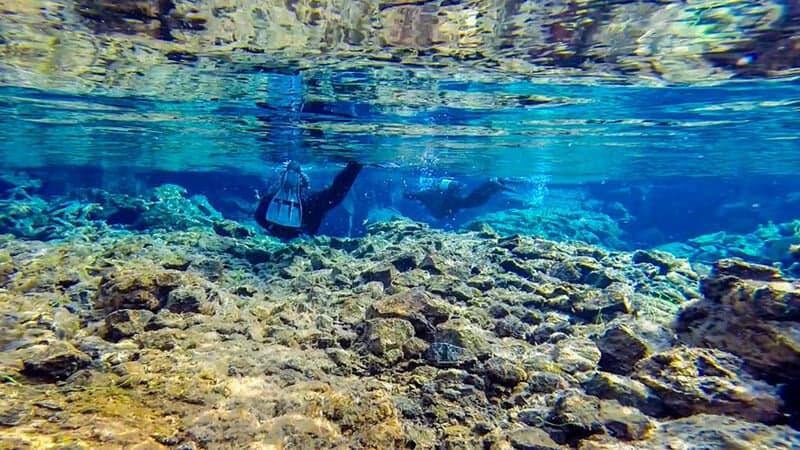
There is a reason Iceland is called the land of fire and ice. Relatively speaking, Iceland is the youngest landmass on the planet, formed 25 million years ago by volcanic activity. This volcanic activity is due to the fact that Iceland straddles the mid-Atlantic ridge, a place where the ocean crust spreads apart to form new ocean crust.
One side of the ocean crust, also termed tectonic plate, is the Eurasian plate and the other is the North American plate. This spreading zone is constantly moving, drifting apart at a rate of about two centimeters every year.
The Silfra fissure is essentially the opening in this crust filled with ice cold glacial water. It is the only place in the world where the ridge rises above sea level. Because of this the Silfra is a UNESCO world heritage site found in the heart of Þingvellir National Park.
Travelers flock to this landmark from all over for a glimpse at a unique geological phenomenon underworks. Those who crave more like me can brave the elements and plunge into the waters between the Silfra, immersing themselves into a frosty place unlike any other. Check out 15 Interesting Facts About Iceland
A Chilly Scuba Dive
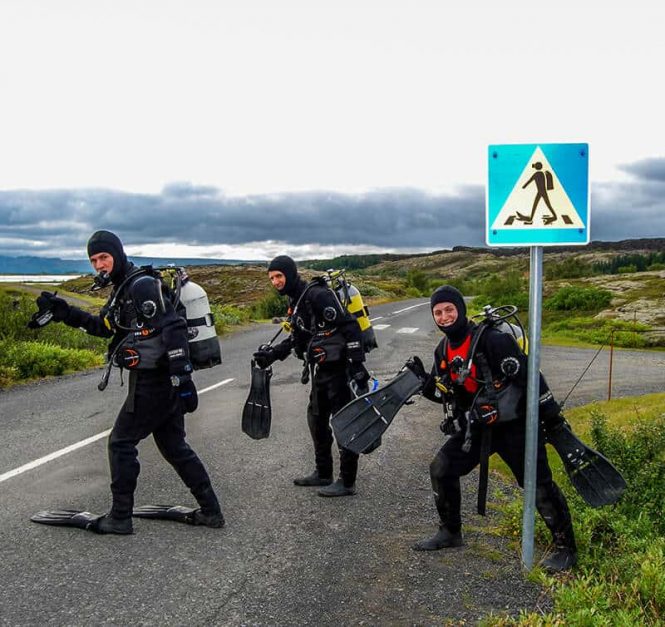
I’ll never forget my first steps into the Silfra waters. Even sporting a drysuit, the water was mind numbing.
Hovering at around 3C, the Silfra fissure is fed by glacial water from the Langjökull, Iceland’s second largest glacier.
Melted and filtered underground through porous lava rocks, the glacier water slowly makes its way from the highlands all the way to Þingvallavatn Lake by means of the Silfra.
Like a submarine, I slowly submerged beneath the waterline. Thanks to the incredible visibility conditions I quickly understood why the Silfra is a famous place among scuba divers. At the surface the water was so clear I could see the volcanic rock formations 70 or 80 feet below. Submerged I could see even further.
I made my way through the large and small crack of the Silfra Hall, admiring the dramatic rock formations beginning at the surface and plunging down into the depths of the fissure.
Lime green algae called “troll hair” danced in the water as I finned by. Just as many scuba divers have done before me, I took my place between the tectonic plates with one hand on the Eurasian plate and one on the North Atlantic plate for a classic photograph.
Silfra Cathedral
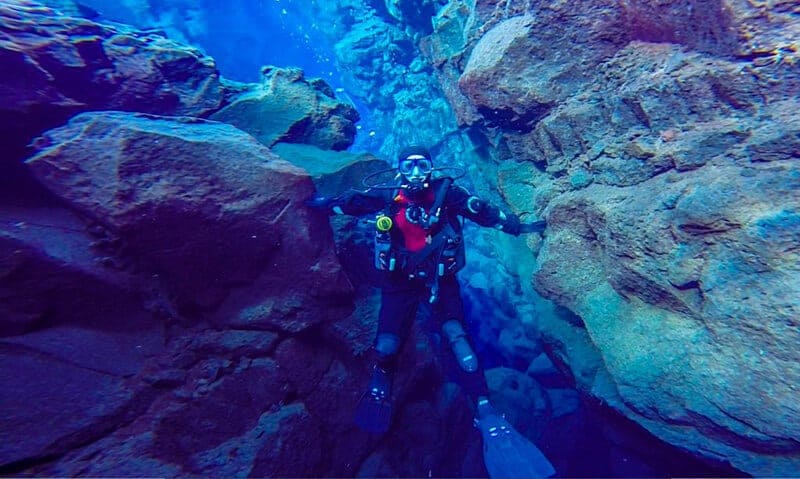
Next came the Silfra Cathedral, the deepest and widest part of the dive. With almost perfect visibility from end to end (over 100 feet) the sweeping sandy view of the Cathedral was breathtaking.
The visibility and light penetration through the water was so good, I had to keep a close eye on my depth gauge, to not lose track of how deep I was. The Cathedral’s lava stone walls contrasted ferociously with white sandy bottom giving this section a divine sensation.
My description certainly does not do it justice.
Silfra Lagoon
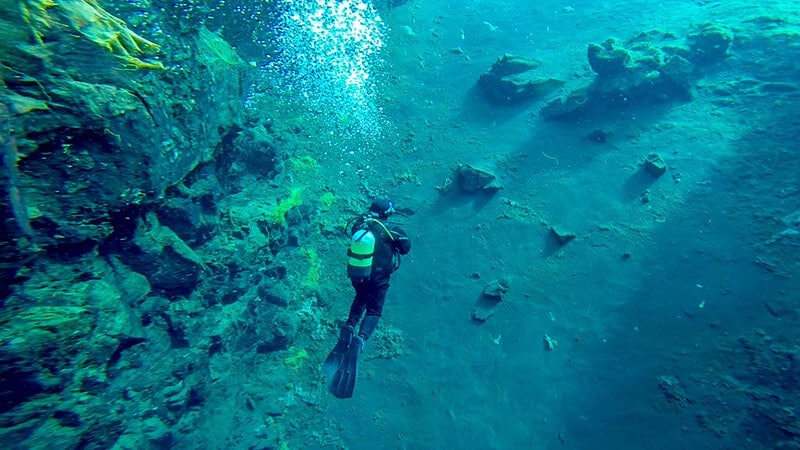
From the Silfra Cathedral we veered sharply left into the shallow Silfra Lagoon. A calmer and quieter section of the dive, the colorscape of the lagoon looked so brilliant through the water. Browns, blacks, greens and blues created an underwater kaleidoscope. It’s hard to smile with a regulator in your mouth but I somehow managed it. With the smile came the crinkle of my eyes and I could feel water slowly start to flood my mask.
Diving in the Silfra’s extreme cold is worth the pain
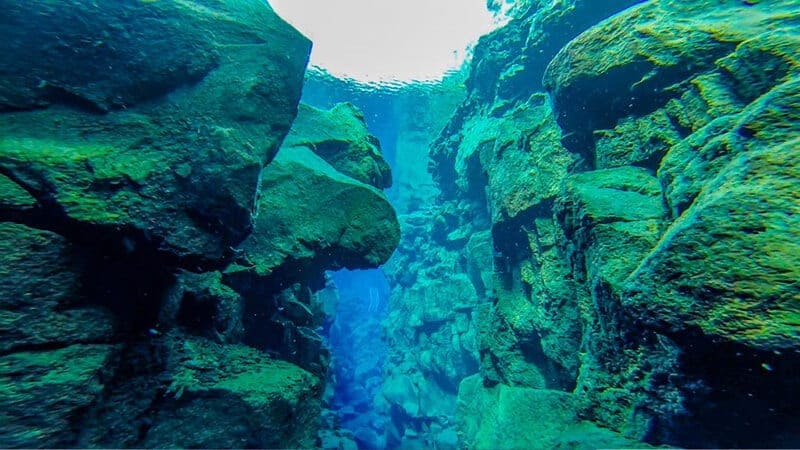
As I headed towards the exit platform I could feel myself start to shake. By now I had been in the freezing cold water for 30 minutes and my body was paying the price.
My fingers had lost so much dexterity from the cold that I had a hard time gripping the railing to pull myself out of the lagoon. Thankfully it was nothing some hot chocolate and warm mittens couldn’t fix.
To dive the Silfra is to truly take one gigantic step out of your comfort zone and redefine cold water diving.
Whether you dive the Silfra to lose yourself in the geology, touch the tectonic plates or give yourself brain freeze, if you are brave enough to weather the glacial waters, you will be rewarded with world-class diving and incomparable visibility.
Do you dare take the plunge in Iceland?
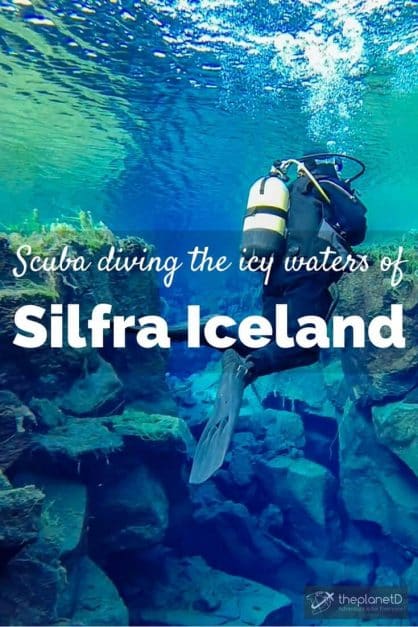
Read More:
12 Mighty Iceland Waterfalls Not to Be Missed
Iceland: Experience the Land of Fire and Ice in Photos
What to Pack for a Winter Trip to Iceland
The Blue Lagoon Iceland

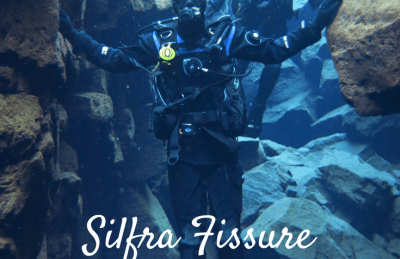


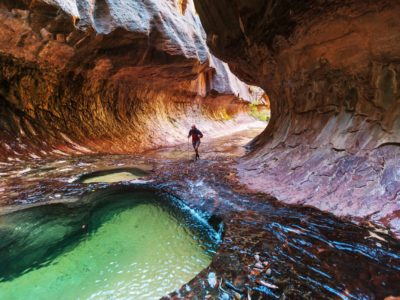
Brave, brave, brave. That’s all we have to say in those freezing waters. However, now it makes us want to become divers!
This is simply mind blowing. Such freezing cold water I can never do this. Heartfelt applause to you mate. Cheers!